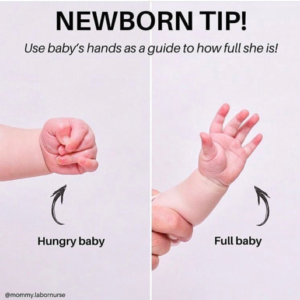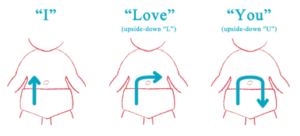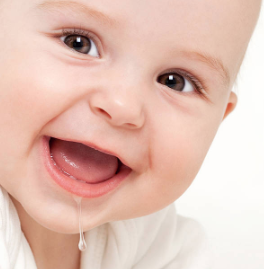Subtle Baby Cues New Parents May Overlook
Baby cues can be as subtle as a yawn or quiver in their little lips. They can be quick, fleeting, and easy to miss or they can be persistent and unavoidable like crying.
The first two to four weeks seem to be the trickiest, as you are sleep deprived, and healing from birth. As a new mother, I believe it took me at least two weeks to distinguish between the baby’s different squeaks, squalls, and cries. However, as time passes, you will get to know your baby and be able to predict their needs quickly and efficiently.
One way is to learn your baby’s cues. These simple, small nonverbal behaviors help parents and caretakers to get a glimpse at what is going on with the little ones. Once you start to notice them, it is easier to satisfy them. Which makes everyone’s lives a bit easier.

Hunger cues
The rooting reflex is present from birth to about four months of age. When you stroke your baby’s cheek, he will reflexively turn his head towards that side to orient himself/herself at the breast for feeding.
As a baby cue, it is usually very subtle, but it is the earliest sign of hunger. Sometimes it is accompanied by the baby bringing their hands to their mouth for sucking. Even if you are not breastfeeding the baby will use this cue to let you know they are hungry. Try offering them your breast or a bottle. If you miss this cue, they may move into a frantic head movement, where they move their heads from side to side. As a last resort, they will cry. As you can imagine the more aggressive the cues are the harder it will be to calm and orient the baby for feeding.
Another great cue to know for feeding is to look at your baby’s hands. Clenched hands often indicate digestive discomfort, which could range from hunger to gas, constipation, or even mild reflux.

Gas and constipation cues
Clenching hands often means there is some digestive discomfort going on such as difficulty pooping or gas pain. Some babies will also draw their legs into their chest or arch their backs when feeding or afterward. You can confirm this cue by looking at the baby’s abdomen. If it is bulging out, swollen, or an unusual shape it could be that they are having difficulty pushing.
For gas or frequent burping consider these three things. Does the baby have a good latch at the breast or the bottle? If not, correct the latch. Does the baby chuck the milk at a feeding? If so consider stopping the feeding several times to burp and decrease the abdominal pressure. If the baby is frequently fussy after a feed keeps the baby upright for 30 minutes after a feed before laying them down.
With constipation try gently massaging the belly in a circular CLOCKWISE motion or do the I-love-you message (see image above). Additionally, try bicycle their legs softly to help move their bowels along. Or learn advanced techniques by taking an infant massage class.

Overstimulation cues
When your baby seems to pull on their ears and turn her head away, sneezes, or hiccups for no apparent reason it could be a sign of overstimulation. Babies are sensitive to their environments and can become easily overstimulated. It can happen at any time for any reason.
To prevent a sensitive child from becoming overstimulated reduce the possible stimulants. When out of the home consider babywearing or putting them in a stroller that is lightly covered. If at home hold them skin to skin so that they can feel your warmth and heartbeat. Hum, sing, or hold the silence to help them reorganize themselves and calm down. Darkness and cuddles may help or movement like being rocked in a rocking chair.

Sleep or bedtime cues
This one may appear easy for new parents. A sleeping baby is well ‘sleeping’. All babies will yawn and become drowsy before falling asleep. However, did you know that a baby who is sleeping with their hands over their head is out cold and will be for some time? This is a great trick when you are trying to figure how much time you have until the baby wakes.

Teething cues
Babies bring their hands to their mouths all the time for different reasons. If your baby is drooling more than normal or extremely fussy, feel around the gums, especially the front of the mouth. If one area is harder than others a tooth could be poking through. As teething progresses the baby may develop a harmless chin rash or diaper rash due to the excess saliva.
Some babies get teeth as early as three months and may have eight to ten teeth by one year.
Babies are simple and small humans. Just like an adult, they have their needs and preferences. By noticing their cues you can start to get to know your child as the individual they are. Be patient with them and with yourself.
